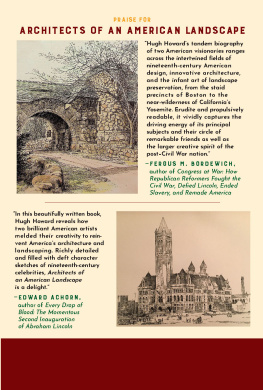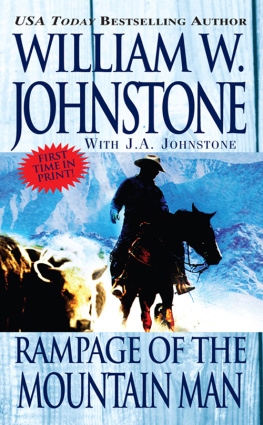Jens Jensen
Writings Inspired by Nature

Jens Jensen at the fountain he designed for Indiana Dunes State Park, circa 1930s
Courtesy Prairie Club Archives, Westchester Township History Museum, Chesterton, Indiana.
Jens Jensen
Writings Inspired by Nature
EDITED BY
WILLIAM H. TISHLER
WISCONSIN HISTORICAL SOCIETY PRESS
Published by the Wisconsin Historical Society Press
Publishers since 1855
2012 by the State Historical Society of Wisconsin
E-book edition 2012
For permission to reuse material from Jens Jensen: Writings Inspired by Nature, ISBN 978-0-87020-490-6; e-book ISBN 978-0-87020- 605-4, please access www.copyright.com or contact the Copyright Clearance Center, Inc. (CCC), 222 Rosewood Drive, Danvers, MA 01923, 978-750-8400. CCC is a not-for-profit organization that provides licenses and registration for a variety of users.
wisconsinhistory.org
Photographs identified with WHi or WHS are from the Societys collections; address requests to reproduce these photos to the Visual Materials Archivist at the Wisconsin Historical Society, 816 State Street, Madison, WI 53706.
Natural Parks and Gardens is SEPS licensed by Curtis Licensing, Indianapolis, IN. All rights reserved.
16 15 14 13 12 1 2 3 4 5
The Library of Congress has cataloged the printed edition as follows:
Jensen, Jens, 18601951.
Jens Jensen : writings inspired by nature / edited by William H. Tishler.
p. cm.
Includes bibliographical references and index.
ISBN 978-0-87020-490-6 (hardcover : alk. paper) 1. Landscape architectureMiddle WestHistory20th century. 2. Landscape protectionMiddle WestHistory20th century. 3. Nature conservationMiddle WestHistory20th century. 4. Landscape ecologyMiddle WestHistory20th century. 5. Human ecologyMiddle WestHistory20th century. 6. Philosophy of natureMiddle WestHistory20th century. 7. Middle WestEnvironmental conditionsHistory20th century. I. Tishler, William H. II. Title.
SB470.54.M54J46 2012
712.0972dc23
2012007289
Publication of this book was made possible in part by gifts from John K. Notz Jr., Bruce Johnson, and The Kubly Foundation.

Proposed Improvements Humboldt Park, ca. 1907 plan
Courtesy of Chicago Park District Special Collections.
INTRODUCTION
BY WILLIAM H. TISHLER
We can still see him in his late eighties, erect and vigorous, standing under a tall pine on his beloved estate while inveighing, his face looking like a storm cloud, against the cruelties, the greed, the injustice, the social ignorance, the sordidness and the exploitation of human beings in mans profit world. Then his face would brighten, it would fill with humor and kindliness while he would tell of the joys and the compensations that come to the person who lives in close communion with Nature and observes her laws.
William T. Evjue

Jensen during the planning and construction phase of Lincoln Memorial Garden, Springfield, Illinois, circa 1938
Courtesy of Lincoln Memorial Garden Archives
Jens Jensen is regarded as one of the greatest landscape architects of his age. This reputation is based primarily on his extensive work as a designer of a variety of landscapes throughout the Midwest and beyond. At the time of his death in 1951, Jensen had achieved considerable notoriety and the New York Times called him the dean of American landscape architecture.
Born in 1860 to affluent farmers in Dybbl, Denmark, Jensen immigrated to America when he was twenty-four in part to escape the German occupation of his homeland and also in response to his familys refusal to accept his fiance, Anna Marie Hansen. Having personally experienced Prussian imperialism and militarism, he wished to be free of the feudal obligations and aristocratic authoritarianism in Denmarkand to marry against his familys wishes.
Once in the United States Jensen earned a living on farms in Florida and Iowa. He and Anna Marie then moved to Chicago, where he found work in a soap factory before starting as a street sweeper within the West Park System. His fascination with the areas natural features would shape his design philosophy, which was based on native plants and other aspects of the Midwests environment. In 1894 Jensen rose to become superintendent of Chicagos Humboldt Park and held that position until 1900, when he was dismissed for refusing to participate in political graft. He then began his own design practice. Rehired in 1905 as superintendent of the entire West Park System, Jensen shifted his role to consulting landscape architect in 1909, a position he held until 1921. He became a major figure in Chicagos cultural life during this time. His private practice designing gardens, estates, and parks throughout the Midwest and beyondoften for some of the regions most prominent citizensflourished. At the same time he established a reputation as a well-known and outspoken conservationist.
Jensen was also a prolific and visionary writer. Yet, with the exception of his two books, Siftings and The Clearing, too little is known about his many published works. Throughout his illustrious career he wrote articles for gardening magazines and national publications, newsletters for conservation and civic groups, planning reports, and pieces for scores of newspapers, plus countless letters to friends, colleagues, editors, politicians, government officials, civic activists, and environmentalists.
This book is a collection of many of Jensens most significant essays. They are presented with their often-unconventional spellings and grammar and arranged chronologically to help the reader follow the maturation of his thinking and writing style. They also provide important insights into how his philosophy of working with a landscapes sense of placeespecially its native plantsevolved during his long, thought-provoking career.
Like the noted English landscape designer Andre Repton, who spread his ideas through his Red Books, or Andrew Jackson Downing, who founded the Horticulturist and authored several influential books on rural architecture and American landscape gardening, Jensen realized the power of the printed word for disseminating his views about conservation, planning, and landscape design. He believed that his approach to design should be a universal philosophy for shaping outdoor spaces; thus, he zealously shared his ideas for working with a wide range of landscapes, from home gardens to cities to large areas of countryside.
I believe in the influence that environments exert on humans, both for the good and the bad, Jensen wrote. He considered the experience of environment to be a paramount determinant in shaping human behavior and character. Given this belief, he acted to improve built environments and worked to save prime areas of the natural world, including wilderness areas and native landscapes of North America. He was an environmentalist long before the term became popular during the 1960s.
Jensens published essays chronicle the growth of a true artist concerned not with egoistic expression but rather the overall destiny of the individual and the greater cultural advancement of humanity. He did not discriminate in his empathy. His work enriched the lives of aristocratic estate owners such as Henry Ford, for whom he designed the grounds of Fair Lane in Dearborn, Michigan, as well as the working class and poor through his decades-long advocacy for public parks on Chicagos West Side. He was a creative and progressive thinker with a fundamental belief that the grandest landscapes of North America should be preserved for future generations of all citizens.
Next page














